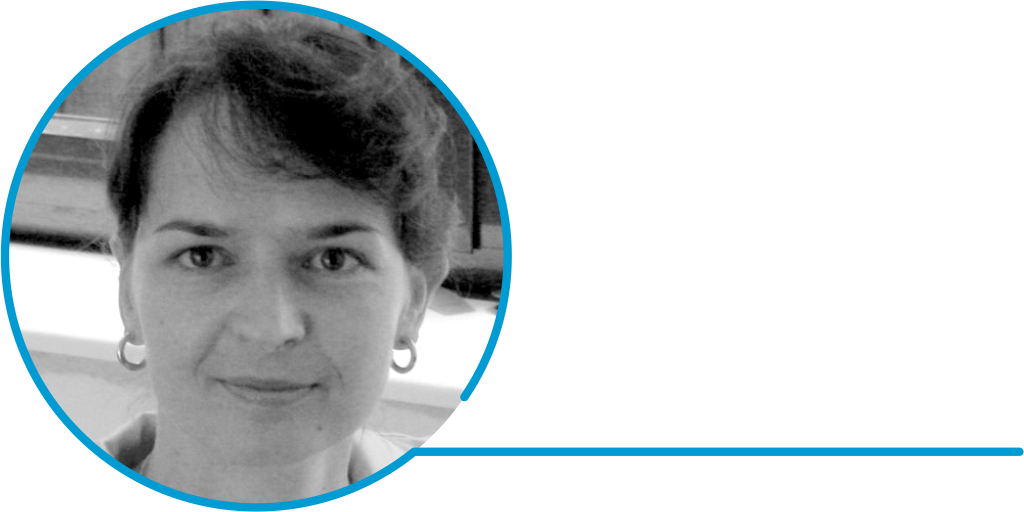
PROJECTS Structural Change Lausitz
5G-Testbed-BB
Abstract
Within the framework of the "5G-Testbed-BB" joint project, 5G applications are to be developed and tested within the framework of so-called testbeds in order to make innovative, transferable and practical concepts and application scenarios, so-called "use case bundles", available to SMEs and industrial companies in particular, but also to public administration or municipal institutions. New network technologies are to be used that are particularly suitable for meeting the needs of the target groups and leading to an increase in innovation in the state of Brandenburg in the medium term. By networking the actors, an innovation ecosystem is to be created in which an active exchange of knowledge takes place and access to resources is made easier for partners in the ecosystem.
Main project results
- In the medium term, supported by the 5G strategy of the state of Brandenburg, an innovation ecosystem will be established, strengthening the resilience and innovative capacity, especially of SMEs
- The campus networks to be established and distributed throughout the region will be further developed and sustained, advancing connectivity within the business sector and between business and research
- The overall project, through the creation of testbeds and a 5G ecosystem, will significantly contribute to increasing the variety of offerings and facilitating market entry for new companies and SMEs to develop specialized functions and components for innovative wireless network technologies
- The planned 'use case bundles' in the logistics and unmanned aviation (drones) sectors will ensure that regional supply chains become more reliable
Duration
05/2023-10/2025, 20 months
Mission statement
Empowering Brandenburg through innovative 5G solutions for SME and the public sector
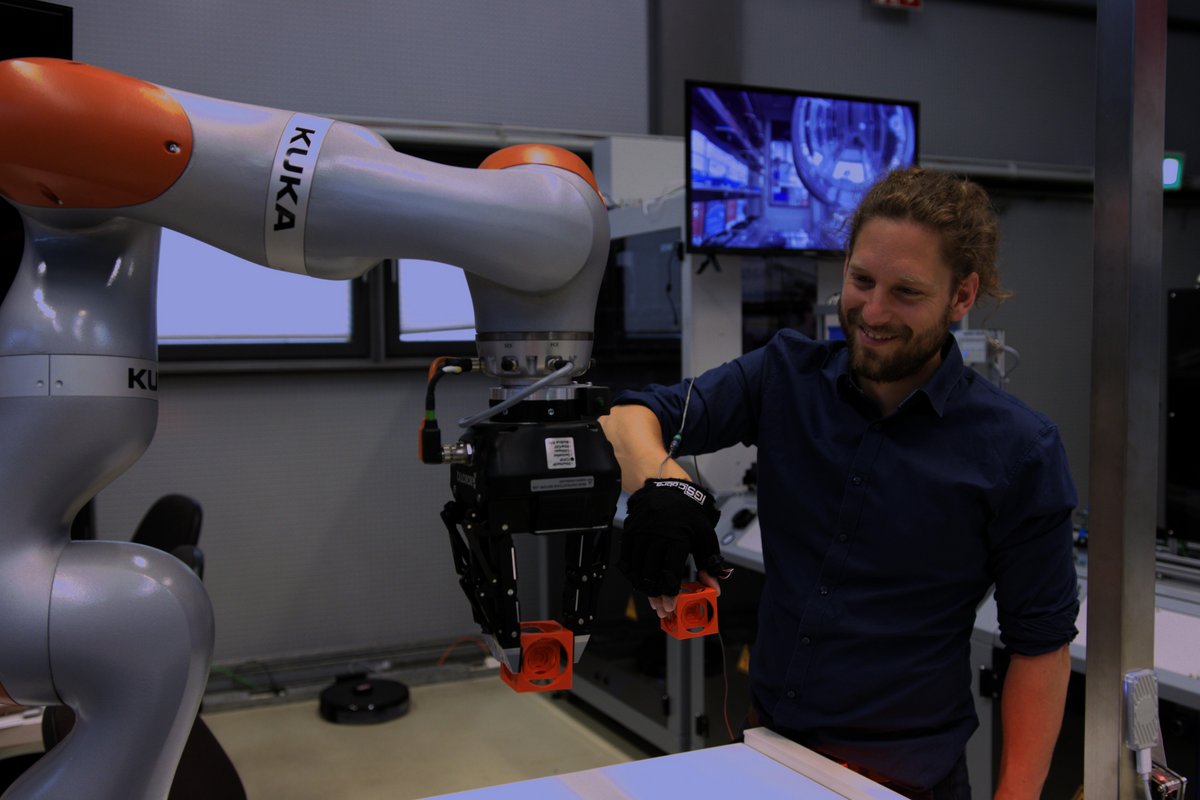
Researchers:
Ulrich Berger
BTU, Automatisierungstechnik
T +49 (0)355 69 4111
ulrich.berger(at)b-tu.de
Projektleiter
Dr. Frank Lochter
Ministerium für Wirtschaft, Arbeit und Energie des Landes Brandenburg
Heinrich-Mann-Allee 107
14473 Potsdam
Frank.lochter(at)mwae.brandenburg.de
Ronny Porsch, B.Sc.
BTU, Automatisierungstechnik
ronny.porsch(at)b-tu.de
Funded by
BMDV
Open-Source-Software für ländlichen On-Demand-Verkehr
Abstract
On-demand services can help to close gaps in rural public transport. However, their operation requires proprietary software, which usually incurs high license fees - a major hurdle for many municipalities, especially in structurally weak regions. As a result, there is a lack of on-demand offerings precisely where the need is particularly great. Moreover, available software solutions can hardly be integrated into existing rural public transport services: connections to buses and trains cannot be guaranteed and parallel journeys between public transport and on-demand transport cannot always be avoided.
The aim of the OSLO project is an analysis of feasibility of an open-source software solution for the integration of on-demand services into the public transport network in rural areas.
At this, the main task of the BTU research group is the investigation and conception of an intermodal routing algorithm that takes into account, adapts, and combines various routing methods according to the different modes of transport and their parameters.
Duration
11/2022-10/2023
Mission statement
The aim of OSLO is the investigation of the feasibility of an open-source solution for rural on-demand transportation and the conception of intermodal routing methods.
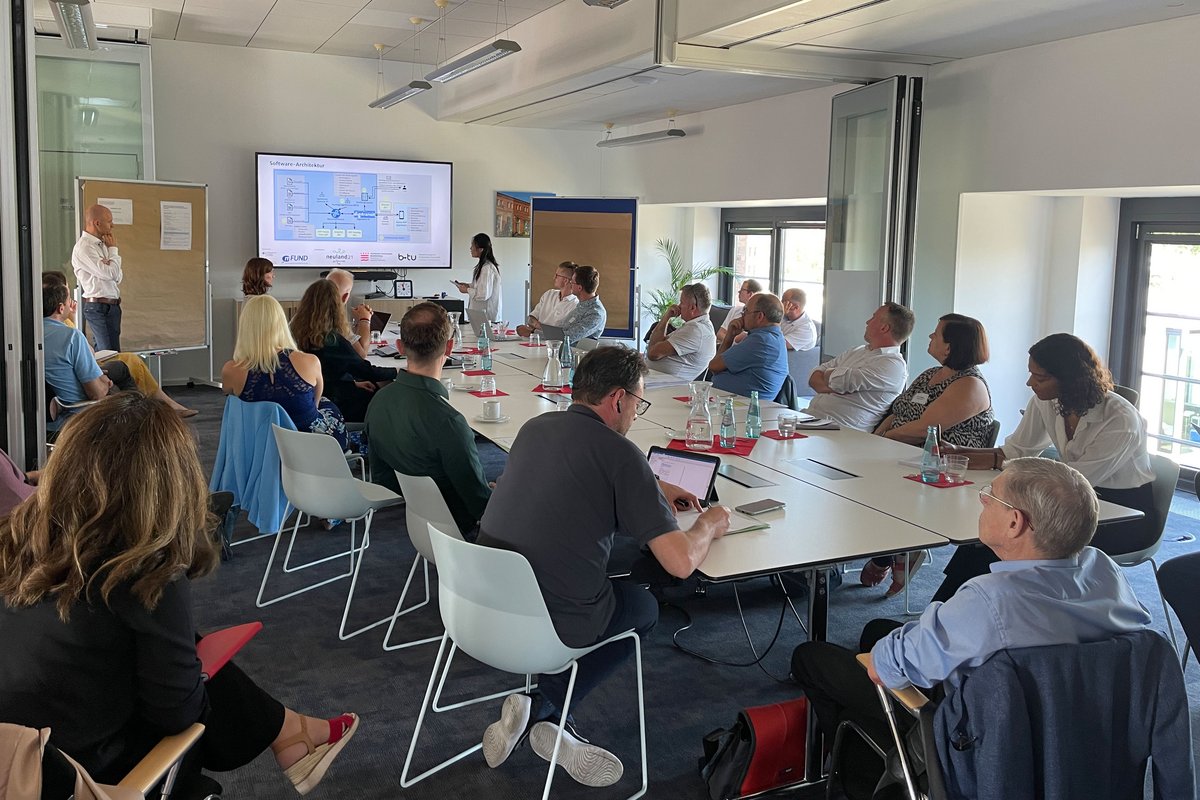
Präsentation der OSLO-Projektergebnisse bei der Digitalagentur Brandenburg (DABB) in Potsdam (Foto: neuland21)
Researchers:
Petra Hofstedt
BTU, Programmiersprachen und Compilerbau
T +49 (0)355 69 3886
petra.hofstedt(at)b-tu.de
Andre Nitze
Technische Hochschule Brandenburg,
FB Wirtschaft
Magdeburger Straße 50, 14770 Brandenburg an der Havel
Alexander Klinge
Neuland 21 e.V.
Klein Glien 25, 14806 Bad Belzig
Funded by
BMDV
Innovation Hub 13 - TP5: Recommendation Engine
Abstract
Cognitive Systems are adaptive, adaptable and can act target‐oriented even with uncertain and incomplete information. So far Artificial Intelligence (AI) is used as an umbrella term for a diversity of methods for making data available and usable. This project (part of Innovation Hub 13) focuses on the integration of AI‐methods into a cognitive system. Such a system gathers information, reaches decisions and recommends actions. The desired cognitive system requires integration of three key technologies of AI: databases, text processing and behavior control. Initially, we create a methodical classified collection of concepts (thesaurus). Because in this project the raw data is text, the relevant terms and relations get extracted through syntactic and semantic analysis. The resulting structures are then stored in databases for universities, public authorities and industry. On this basis behavior control creates a scored matching and recommends partners and funding.
Website
Duration
01/2018–12/2022
Mission statement
Devise and construct a semantic search matching research proposals, funding programs, and company profiles.
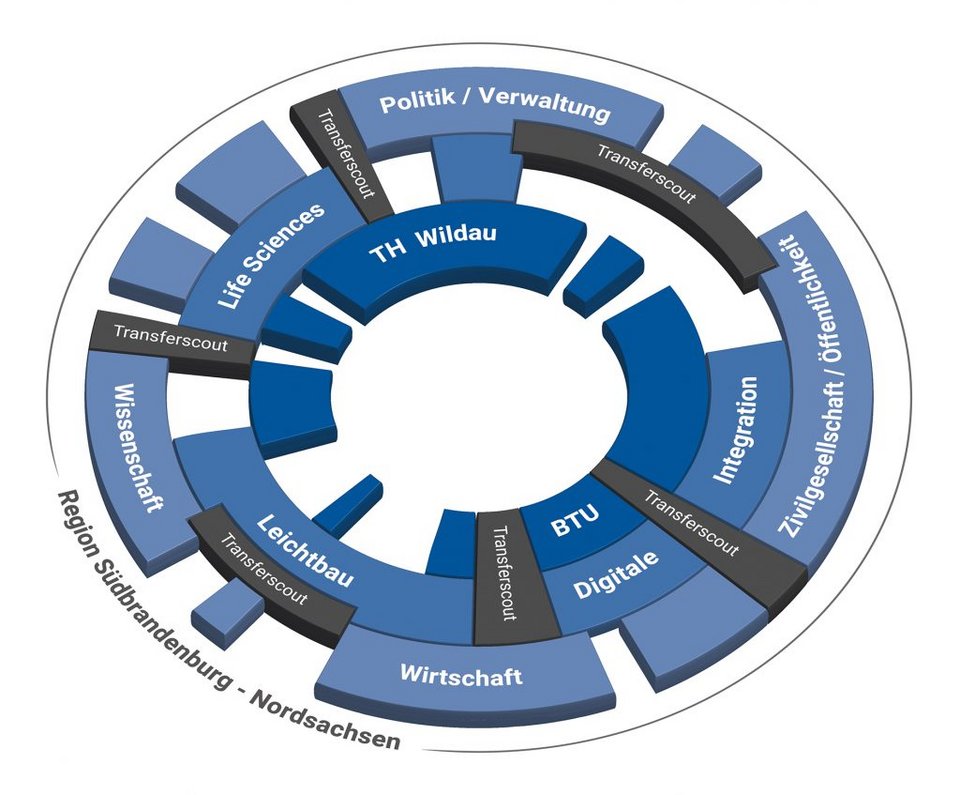
Researchers:
Matthias Wolff
BTU, Kommunikationstechnik
T +49 (0)355 69 2128
matthias.wolff(at)b-tu.de
Ingo Schmitt
BTU, Datenbank- und Informationssysteme
T +49 (0)355 69 2039
ingo.schmitt(at)b-tu.de
Markus Huber-Liebl
Lehrstuhl Kommunikationstechnik
BTU Cottbus-Senftenberg
Markus.Huber(at)b-tu.de
Funded by
BMBF, Innovative Hochschule
Trainer for Artifical Intelligence
Abstract
In this accompanying scientific research project for the WIR!-Alliance, various novel methods of AI are to be researched and developed. This includes methods of quantum information processing and new technologies for converting expert knowledge (via voice dialogue and text recording) into relational databases or constraints. Furthermore, we develop constraint-based methods for automatic model analysis, completion and optimization. In addition, methods for pattern recognition, analysis and intelligent fusion of different types of sensor and process data are to be researched and implemented with the aim of predictive process control and maintenance. Particular attention is paid to the development of methods for dealing with "small data" in order to be able to train robust models with little data (and especially little error data). For this purpose, training data should be simulated, and aspects of semantics and constraint programming should be taken into account.
Main project results
- The development and successful implementation of AI best practice project in regional SMEs.
- The deployment of a monthly updated AI Blog with valuable information on AI, AI application in SME and instructions.
- Impartment of basic and specified knowledge as well as AI support for more than 150 SMEs.
Duration
11/2020 - 10/2022
Mission statement
To build up the competences of SMEs and their employees in the field of AI and to enable the implementation of appropriate AI applications in SMEs.
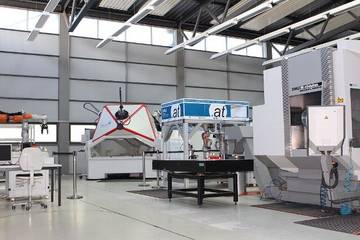
Researchers:
Ulrich Berger
BTU, Automatisierungstechnik
T +49 (0)355 69 4111
ulrich.berger(at)b-tu.de
Projektleiter
Grit Rehe
Mittelstand 4.0-Kompetenzzentrum Cottbus, LS Automatisierungstechnik
Siemens-Halske-Ring 14, 03046 Cottbus
rehe(at)b-tu.de
Sascha Vökler
Mittelstand 4.0-Kompetenzzentrum Cottbus, LS Automatisierungstechnik
Siemens-Halske-Ring 14, 03046 Cottbus
sascha.voekler(at)b-tu.de
Funded by
BMWK
iCampus Arbeitspaket Predictive Maintenance Fortune
Abstract
The aim is to improve maintenance cycles through predictive maintenance. The idea is based on the experience that changes, e.g. ageing of a machine, are detected and remedied on the basis of different perceptible phenomena. Multi-parameter measurements create the technical possibility to detect information about changes in system behaviour at an early stage. With the help of suitable sensory components for the detection of operating states, a multi-sensory subsystem is created via sensor fusion, which provides the necessary information for describing the operating state of the machine. Furthermore, a modular system is to be developed with which predictive maintenance solutions can be individually created from an expandable library and made applicable without specific programming knowledge. It is intended to enable SMEs to benefit from artificial intelligence without highly specialised staff.
Main project results
- Selection of sensors and sensor subsystems with different measurement principles together with their hardware integration, evaluation algorithms, training of the algorithms, evaluation of the solution
- Integration of the sensor hardware into the evaluation platform, realised with embedded systems by means of appropriately broadband interfaces and coupling to 5G networks via appropriate interfaces Tools to support the implementation of the AI procedures
- Development of a methodology/guidelines so that non-experts can also use this tool to equip their own products with predictive maintenance or quality assurance features
- Design tool for the exploration of the design or solution space for the selection, placement and networking of sensors as well as the allocation of algorithms
References
| [1] | Cristian Martín, Peter Langendoerfer, Pouya Soltani Zarrin, Manuel Díaz, Bartolomé Rubio: Kafka-ML: Connecting the data stream with ML/AI frameworks. Future Gener. Comput. Syst. 126: 15-33 (2022),2021 |
| [2] | M. Assafo and P. Langendörfer, "A TOPSIS-Assisted Feature Selection Scheme and SOM-Based Anomaly Detection for Milling Tools under Different Operating Conditions," in IEEE Access, doi: 10.1109/ACCESS.2021.3091476. |
Duration
01/2022-06/2025
Mission statement
Creation of a flexible toolbox for non-experts with software and hardware components for pedictive maintenance in retro-fitting.
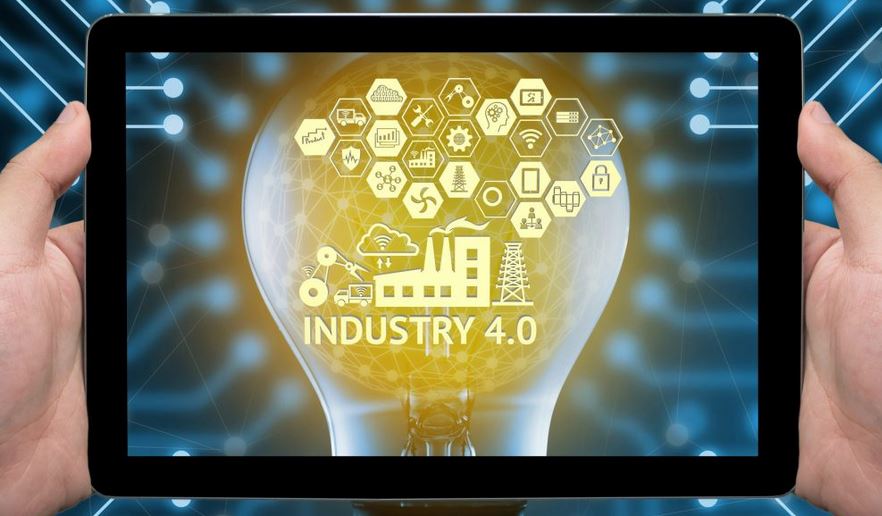
Researchers:
Peter Langendörfer
BTU, Drahtlose Systeme
T +49 (0)335 5625 350
peter.langendoerfer(at)b-tu.de
Ulrich Berger
BTU, Automatisierungstechnik
T +49 (0)355 69 4111
ulrich.berger(at)b-tu.de
Michael Hübner
BTU, Technische Informatik
T +49 (0)355 69 2794
michael.huebner(at)b-tu.de
Dr.-Ing. Marc Reichenbach
Technische Informatik
Konrad-Wachsmann-Allee 5, 03046 Cottbus
marc.reichenbach(at)b-tu.de
Funded by
BMBF
WIR! - WI+R -Repair, Artificial Intelligence, Augmented Reality: Research and Development of digital, intelligent assistance systems for worker guidance and research into the successful Implementation of AR and VR assistance systems in craft work processes companies in the region Lausitz.
Abstract
Technological, economic and social innovations are the key to successful structural change in the Lausitz. The sub-project RepAIreality forms the basis for innovations in the field of maintenance, servicing and repair (WI+R). It creates the basis for new business areas as well as spin-offs or settlements in the WI+R sector and promotes a more attractive living and working region in the Lausitz (Brandenburg, Germany).
Main project results
The goals of RepAIreality are:
- the development of an AI-based repair assistance system to secure knowledge, which can simultaneously take over the qualification of specialist and non-industry personnel,
- the establishment of an attractive employer image and (3) the development of Lausitz SMEs, via the digitalization of their processes and the use of AR/VR systems, into an efficient and innovative interface between society and industry.
References
| [1] | Andulkar, M., Hodapp, J., Reichling, T., Reichenbach, M., & Berger, U. (2018, August). Training CNNs from Synthetic Data for Part Handling in Industrial Environments. In 2018 IEEE 14th International Conference on Automation Science and Engineering (CASE) (pp. 624-629). IEEE. |
| [2] | Nicke, K., Holst, G., Gleitler, T., Reichelt, L., Dr. Zittel, W., (2019). Batterierecycling als Besch ftigungsperspektive für die Lausitz. Abgerufen 15. Juni 2020, von www.otto-brenner-stiftung.de/fileadmin/user_data/stiftung/01_Die_Stiftung/04_Stiftung_Neue_Laender/02_Publikationen/SNL_10_Batteriestudie.pdf |
| [3] | Zou, W. (2018). Entwicklung eines Systems für das Programmieren durch Vormachen unter Nutzung der Augmented Reality für roboterbasierte Montagesysteme. Shaker Verlag. |
Duration
06/2021-05/2023, 24 months
Mission statement
RepAIreality thus aims at technical, especially AI-based, but above all also economic and social innovations.
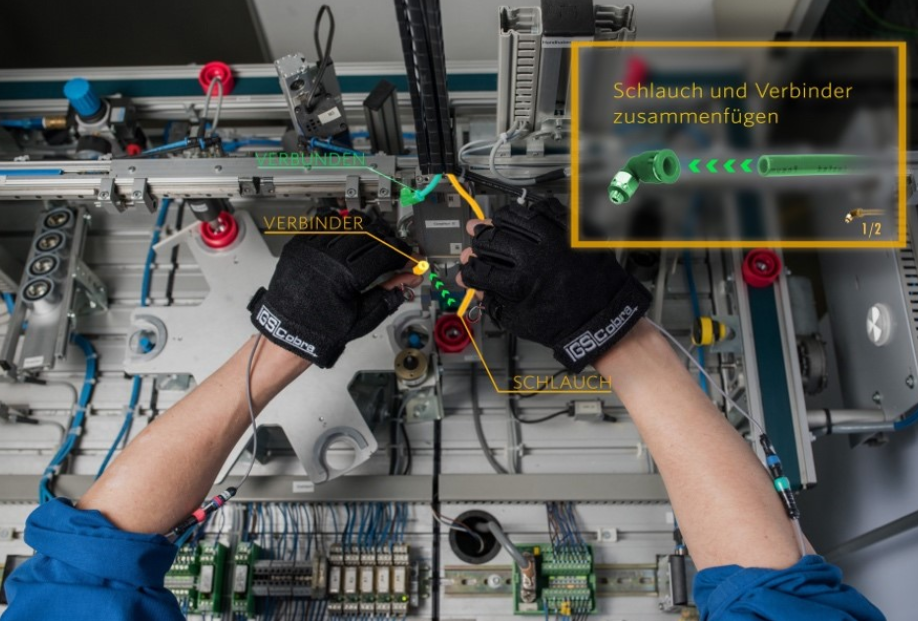
Researchers:
Ulrich Berger
BTU, Automatisierungstechnik
T +49 (0)355 69 4111
ulrich.berger(at)b-tu.de
Projektleiter
Carsten Wedemeyer
Lehrstuhl Automatisierungstechnik
Siemens-Halske-Ring 14, 03046 Cottbus
Carsten.Wedemeyer(at)b-tu.de
Ronny Porsch
Lehrstuhl Automatisierungstechnik
Siemens-Halske-Ring 14, 03046 Cottbus
ronny.porsch(at)b-tu.de
Funded by
BMBF
Using Natural Language Processing (NLP) and Binary Classification for Checking GDPR Compliance in Privacy Policies on Websites
Abstract
Having a GDPR compliant website is crucial for european companies for not getting admonished by lawyers. Therefore, website owners need to be aware of missing information in their privacy policies. That is, e. g., if some services integrated into the website like social media buttons the users of the website must be informed about the usage of their data. For this purpose, we try to extract the important sentences from the privacy policy where data is used by other web services. The data is pre-processed by NLP techniques. The binary classification task was performed by state-of-the-art algortithms optimized by grid search.
Main project results
- After splitting a total of 500 privacy policies scrapped from german websites into around 10‘000 sentences, these sentences were labeled according to the occurence of companies that send user data to own servers or other third partie services. The performance of the 11 used binary classifiers (e. g. feedforward neural network, gradient boosting, random forest, naive bayes) was benchmarked in an exhaustive grid search optimizing the algorithms‘ parameters. A special gradient boosting implementation (xgboost) was able to perform best in terms of accuracy and F1 score. A subsequent named entity recognition extracted the company names from the sentences for comparing them with services that utilize user data.
References
| [1] | Kiss, T., & Strunk, J. (2006). Unsupervised multilingual sentence boundary detection. Computational linguistics, 32(4), 485-525. |
| [2] | Voekler, S. (2021). Machine-Learning-Verfahren in der Produktlinienoptimierung - Simulationsrechnungen und Robustheit, Doktorarbeit, BTU Cottbus – Senftenberg. |
Duration
04/2021-09/2021, 6 months
Mission statement
To build a tool that matches the companies appearing in the privacy policy that set cookies and send data to their servers.
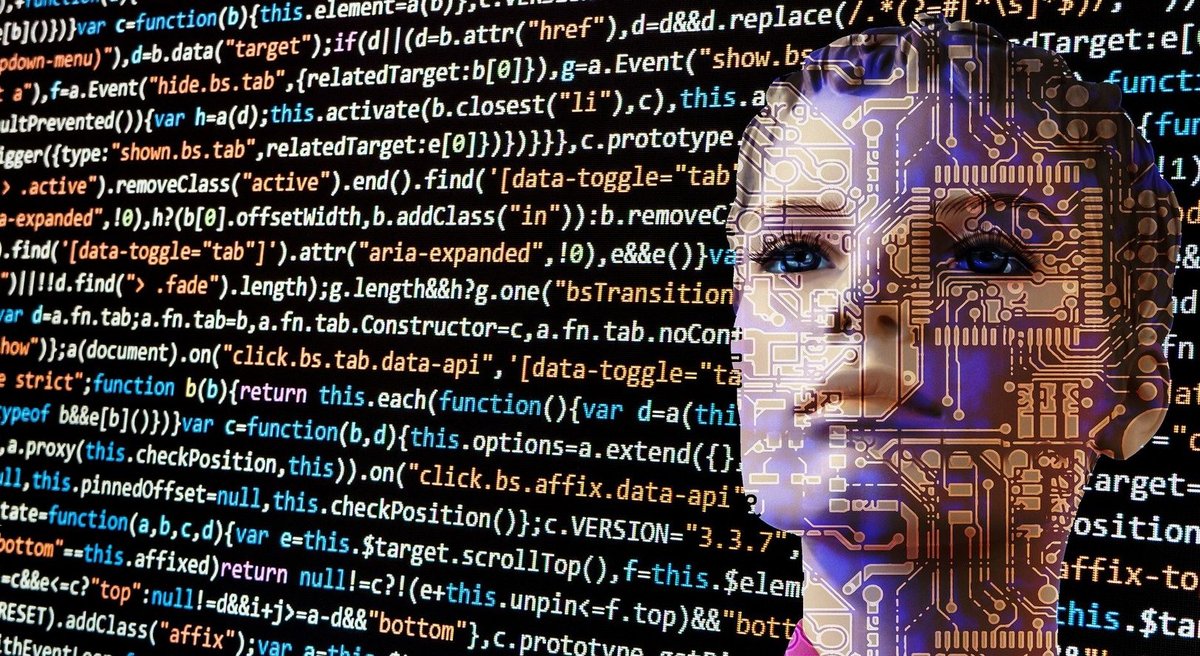
Researchers:
Projektleiter
Sascha Voekler
Mittelstand 4.0-Kompetnezzentrum Cottbus
Siemens-Halske-Ring 14, 03046 Cottbus
sascha.voekler(at)b-tu.de
Julius Liebau
Mittelstand 4.0-Kompetnezzentrum Cottbus
Siemens-Halske-Ring 14, 03046 Cottbus
julius.liebau(at)b-tu.de
Udo Bischof
kickbuzz GmbH
Hauptstr. 30 a, 03051 Cottbus
udo.bischof(at)kickbuzz.com
Funded by
BMWK
Bedford-based decision model upon evaluation of wireless sensor network data
Abstract
Today's sensors provide a wide range of information and data. In the past, these were processed directly in sensors, so that the sensor was a highly complex structure that was only configured by experts. As a result, complex and expensive on-site commissioning was necessary to configure the sensor with its many different parameters so that it works reliably.
However, with today's communication options and very powerful cloud server solutions, current sensors are slimmed down because the data can be evaluated in the cloud server infrastructure.
The intelligence regarding the measurement results migrates to the cloud infrastructure.
With AI algorithms within the cloud server infrastructure, the existing data can be analyzed in combination with the evaluation of historical data in such a way that a statement can be made about the plausibility of the last measured value.
Main project results
- The Bedford-based decision model is used to evaluate the sensor measurement data for plausibility. To decide as to which sensor supplies the correct measurement data, training is carried out with an AI system. This adjustment process can be performed monthly or as needed.
- An algorithm analyzes new from sensor collected data for plausibility. Based on the result of the calculation, decision regarding sensor reconfiguration could be made independently. Furthermore new incoming data would be optimized accordingly.
References
| [1] | Berger, Arno; Hill, Theodore P. (30 June 2020). "The mathematics of Benford's law: a primer". Stat. Methods Appl. 30 (3): 779–795. arXiv:1909.07527 |
| [2] | Frank Benford (March 1938). "The law of anomalous numbers". Proc. Am. Philos. Soc. 78 (4): 551–572; www.jstor.org/stable/984802 |
| [3] | Dacey, James (19 November 2020). "Benford's law and the 2020 US presidential election: nothing out of the ordinary". Physics World. physicsworld.com/a/benfords-law-and-the-2020-us-presidential-election-nothing-out-of-the-ordinary/ |
Duration
06/2021-04/2022
Mission statement
To build a reliable decision system in the field of level measurement sensor technology

Researchers:
Projektleiter
Dr. Svetlana Meissner
Mittelstand 4.0-Kompetnezzentrum Cottbus
Siemens-Halske-Ring 1403046 Cottbus
Svetlana.Meissner(at)b-tu.de
Michail Krause
Inno-Tec
Grötzinger Weg 7, 76297 Stutensee
m.krause(at)inno-tec.eu
Funded by
BMWK
CustOmized Collaborative Knowledge Pilot for Industrial Technology
Abstract
In the joint project COCKPIT 4.0, innovative automation solutions for small series assembly in the aviation industry are being researched. To this end, prototypical solutions are being developed and implemented in research demonstrators. The tasks are characterized by complex products with high quality demands on components and production processes as well as a high number of variants. The use of novel assistance systems in the communication between humans and the work environment, cooperating robot systems capable of learning, and qualification methods adaptable to the respective task are central subprojects that are being led to a uniform system solution. The human-centered penetration of real components in the assembly network on the basis of computer-aided design methods is realized by advanced technologies of digital twinning, i.e. the use of digital twins.
Main project results
- Research into the interface between humans and the working environment in small series assembly with a focus on planning and programming functionalities.
- Development of technology-supported assistance systems for complex components and assembly processes.
- Processing of process-related knowledge on assembly procedures and feedback into upstream areas such as design and assembly planning.
References
| [1] | V. Zipter, Entwicklung eines Planungs- und Optimierungssystems für den Einsatz sensitiver Roboter in der flexiblen Montage - Robot Farming, Aachen: Shaker Verlag, 2014. |
Duration
01/2018-12/2020, 36 months
Mission statement
Methods of digital twinning in small batch assembly. Selected methods of artificial intelligence such as neural networks in human interface.
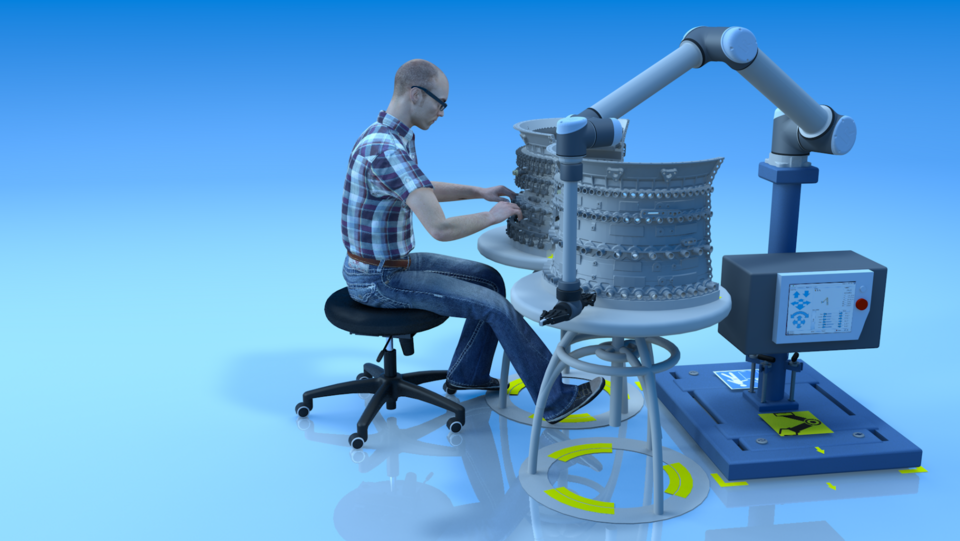
Researchers:
Ulrich Berger
BTU, Automatisierungstechnik
T +49 (0)355 69 4111
ulrich.berger(at)b-tu.de
Projektleiter
Carsten Wedemeyer
LS Automatisierungstechnik
Siemens-Halske-Ring 14, 03046 Cottbus
Carsten.Wedemeyer(at)b-tu.de
Funded by
EU, ILB ProFit Brandenburg
Intelligent Information Processing
(accompanying scientific research)
Part of the WIR! project Co-Innovation Platform Industrial Automation (KOI)
Abstract
The aim of the project is the modeling and optimization of continuous industrial processes using mathematical methods of symbolic AI. New AI methods are developed that enable powerful modelling, as well as the analysis and processing of the meanings gained from the models. The project consists of three sub-projects: Analysis of Structure and Process Models, Algebraic Semantic Processing, Pattern Recognition.
Main project results
- The overall goal of the project is the modeling and optimization of continuous industrial processes using mathematical methods of symbolic AI.
- A hybrid symbolic AI methodology combining quantum information processing, constraint programming and methods for pattern recognition, analysis and intelligent fusion of different types of sensor and process data for dealing with "small data".
References
| [1] | Sven Löffler, Ilja Becker, Franz Kroll, Petra Hofstedt: A Survey of Constraint Transformation Methods. GI-Jahrestagung 2021: 1107-1120 |
| [2] | Sven Löffler, Ilja Becker, Petra Hofstedt: ML-based Decision Support for CSP Modelling with Regular Membership and Table Constraints. ICAART (2) 2021: 974-981 |
| [3] | Maximilian Mühle: Entwicklung eines Lernverfahrens zur Beurteilung von Kompressoren anhand akustischer Signale (Master-Arbeit,2019, in Kooperation mit Fraunhofer IKTS) |
| [4] | Meyer, Werner, Borislav, Borislavov, Eckert, Friedrich, Richter, Christian, Römer, Ronald, Beim Graben, Peter, Huber, Markus, Wolff, Matthias: Formalisierung und Implementierung einer adaptiven kognitiven Architektur unter Verwendung von Strukturdiagrammen. Elektronische Sprachsignalverarbeitung 2021 : Tagungsband der 32. Konferenz Berlin, 3.-5. März 2021, S. 67 - 76 |
Duration
01.01.2022-31.01.2024
Mission statement
Strengthen the development of new process and product innovations in industrial automation
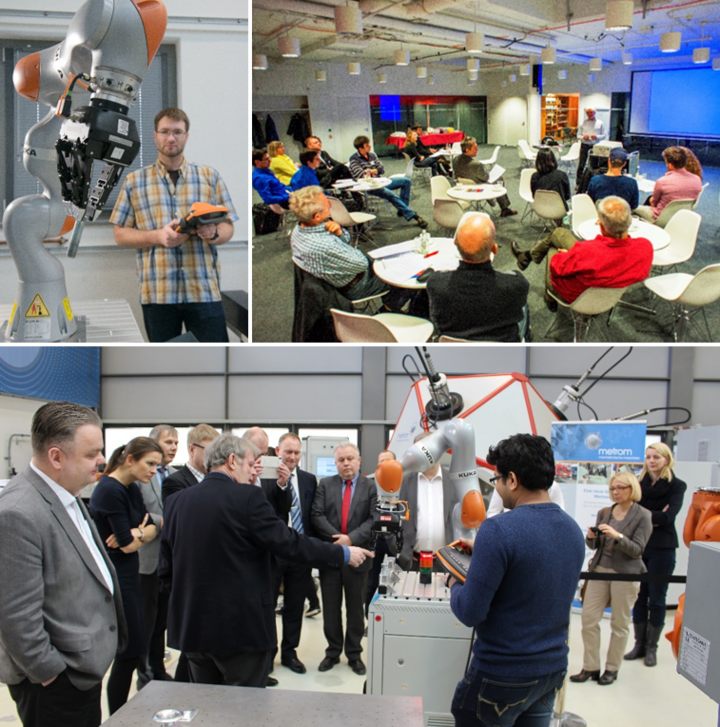
Researchers:
Petra Hofstedt
BTU, Programmiersprachen und Compilerbau
T +49 (0)355 69 3886
petra.hofstedt(at)b-tu.de
Constanze Tschöpe
Fraunhofer IKTS,
Projektgruppe KogMatD Cottbus
T +49 (0)351 88815-522
constanze.tschoepe(at)ikts.
fraunhofer.de
Matthias Wolff
BTU, Kommunikationstechnik
T +49 (0)355 69 2128
matthias.wolff(at)b-tu.de
Borislav Borislavov
Lehrstuhl Kommunikationstechnik
BTU Cottbus-Senftenberg
BorislavNikolaev.Borislavov(at)b-tu.de
Sven Löffler
FG Programmiersprachen und Compilerbau
BTU Cottbus-Senftenberg
sven.loeffler(at)b-tu.de
Maximilian Mühle
Fraunhofer IKTS
Projektgruppe Kognitive Materialdiagnostik
maximilian.muehle(at)ikts.fraunhofer.de
Funded by
BMBF
*completed








